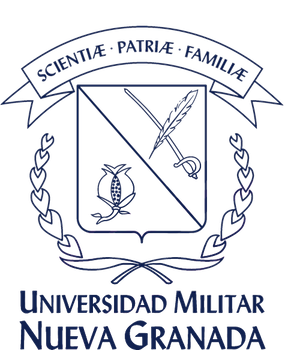Control Backstepping de un robot Scara con incertidumbre paramétrica
Resumen
Uno de los principales problemas en el control por modelo de referencia es que las dinámicas no modeladas, la incertidumbre paramétrica y el acoplamiento dinámico, afectan el desempeño del sistema de control. Este artículo presenta una estrategia de control bajo el enfoque back-stepping, con el fin de garantizar en primera instancia la estabilidad en lazo cerrado del sistema de control de un manipulador Scaracara de 4º de libertad, y en segunda instancia generar un sistema que sea robusto ante incertidumbres paramétricas, sin presentar grandes esfuerzos de control.Descargas
Lenguajes:
esAgencias de apoyo:
Universidad del CaucaReferencias bibliográficas
Sage H., Mathelin M., and Ostertag E., (1999). Robust control of robot manipulators: a survey. En: International Journal of Control. Vol. 72 (16), pp. 1498 – 1522. http://dx.doi.org/10.1080/002071799220137
Burkan R., and Uzmay I., (2003). Variable upper bounding approach for adaptive-robust control in robot control. En: Journal of Intelligent and Robotic Systems. Vol. 37 (4), pp. 427-442. http://dx.doi.org/10.1023/A:1026198004394
Burkan R., and Uzmay I., (2005). Logarithmic based robust control approach to parametric uncertainty for control of robot manipulators, En: Intenational Journal of Robust and Nonlinear Control. Vol. 15 (10), pp. 427 – 436. http://dx.doi.org/10.1002/rnc.993
Mnif F., (2004). A mixed optimal/robust control for robot manipulators, En: Systems and Control Engineering. Vol. 218 (4), pp. 311-321. http://dx.doi.org/10.1243/0959651041165846
Alonge F., D'Ippolito and Raimondi F. (2004). Globally convergent adaptive and robust control of robotic manipulators for trajectory tracking, En: Control Engineering Practice. Vol. 12 (9), pp. 1091-1100. http://dx.doi.org/10.1016/j.conengprac.2003.11.007
Spong M., (1992). On the robust control of robot manipulators. En: IEEE Transaction on Automatic Control. Vol. 37 (11), pp. 668-672. http://dx.doi.org/10.1109/9.173151
Krstíc M., Sun J., and Kokotovíc V., (1996). Robust control of nonlinear systems with inputunmodeled dynamics. En: IEEE Transaction on Automatic Control. Vol. 41 (6), pp. 913-920. http://dx.doi.org/10.1109/9.506250
Lotfatar A., and Eghtesad M., (2007). Applicationand comparison of passivity-based and integrator backstepping control methods for trajectory tracking of rigid-link robot manipulators incorporating motor dynamics. En: International Journal of robotics and Automation. Vol. 22 (3).
LU C., Hwang Y., and Shen Y., (2010). Backstepping sliding mode control for a pneumatic control system. En: Proceedings of the Intitution of Mechanical Engineer. 763 p.
Yao J., Zhu X., and Zhou Z., (2008). The design of slading mode control system based on backstepping theory for BTT UAV. Control and Intelligent system. Vol. 36 (4), pp. 347-354.
Hemici B., Nezli L., Tadjine M., and Boucherit M., (2006). Robust PID/Backsteppineg control design for permanent magnet synchronous motor drive. En: Control and Inteligent Systems. Vol. 34 (3), pp. 194-200.
Härkegard O., (2001). Flight control design using backstepping. Ph.D. Thesis, Sweden: Linköping Studies in Science and Technology.
Khalil W., and Dombe E., (2002). Modeling, identification and control of robots. London: Hermes Penton Science. pp. 347-376. http://dx.doi.org/10.1016/B978-190399666-9/50014-2
Chen C., (1999). Linear system theory and desing. Oxford University Press, pp. 77-79.
Caraflore G., Indri M., and Bona B., (2001). Robot dynamic calibration: Optimal excitation trajectories and experimental parameter estimation. En: Journal of Robotic Systems. Vol. 18 (2), pp. 55-68. http://dx.doi.org/10.1002/1097-4563(200102)18:2<55::AID-ROB1005>3.0.CO;2-O
Mosquera V., and Vivas A., (2006). Robust control for a SCARA robot with parametric uncertainty. En: Proceedings of the International control conference, Glagow.
Mosquera V., (2009). Control robusto de un robot de más de 3 grados de libertad. Tesis de Maestría. Universidad del Cauca, Popayán.












